Diopters, also called wet lenses or magnifiers, are a type of lens that attaches to the outside of the lens port. They enable a shooter to magnify his subject and gain a better-than 1:1 magnification ratio. Shooting with diopters is a natural progression for many macro photographers.
Here we'll discuss what you need to know when getting started or looking for a new diopter, including how to discern quality from junk. We'll also talk about how to mount the lens to your housing. Diopters come in different strengths and offer various measurements of magnification, including +5, +7, +10, and more. Some of these are even stackable, offering an even greater magnification ratio but at the severe cost of image quality.
How to choose diopters
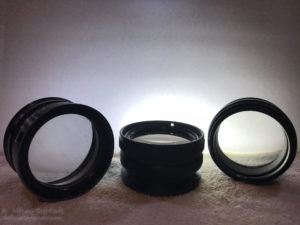
You get what you pay for when it comes to diopters — trying to save a few bucks can cost you plenty in the end, so do a little homework.
Diopters can vary widely when it comes to image quality. Ghosting, chromatic aberrations (CA), loss of light, poor contrast, distortion in the corners, and fringing are some of the biggest problems associated with using a diopter. Luckily, many manufacturers are now scrutinizing the engineering process to eliminate these issues. Using the proper adapter for your diopters is also critical, as the slightest offset of the wet lens may contribute to poor quality in your images.
Macro lens choices are also not created equally. The 60mm lens is not the lens of choice to couple your diopter for shooting supermacro. While that combination might offer cool bokeh, it will only create slight magnification. In most cases a longer lens, such as a 100mm or 105mm macro, are the best option. This combination also gives the shooter the luxury of having choices underwater, offering not only great standard 1:1 macro, but also clear behavior captures and the ability to shoot greater than 1:1.
Simple pointers for shooting with your diopter
The technique for shooting with your diopter is quite different than standard macro and developing a new skillset will be the biggest challenge. Anyone can use a diopter with a lot of practice and a few pointers.
Supermacro is all about the details. Here are a few tips to get the most out of your shots.
- Try buoyancy arms to offset the weight of the diopter and to lighten your grip. Float arms are one of the most overlooked — and most helpful — add-ons, as they will help ease your grip and allow more finesse on your trigger finger.
- Maintain critical focus and release the shutter gently
- Use your left hand under the lens port for stability
- Shoot from a stationary position, such as the sand
Jump settings for using a diopter
Whenever I set up to shoot with my diopter, I prepare my settings, anticipate the composition and get into position. Here's what I use:
Jump setting: DSLR
ISO 200-400
f/stop: f/22-32
Shutter speed: 1/200
Jump setting: Compact
ISO 400
f/stop: f/9-11
Shutter speed: 1/500
Zoom in to the maximum of the optical zoom: avoid digital zoom

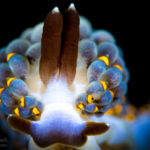
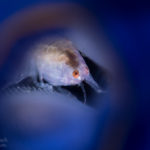
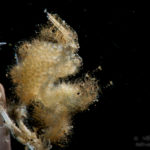
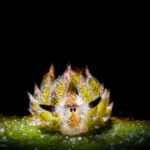
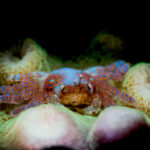
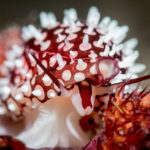
Top tips for shooting supermacro with diopters
- Back-button focus and focus-lock are two methods for fine-tuning your focusing skills. Using a single-spot focus point, place the focus box over the subject's eyes, rhinophores or desired anchor point. With the focus locked on your lens should not hunt. Keep your eyes open and watch your subject's movements to be sure it is sharp in the frame.
- Magnification naturally decreases the depth-of-field. So, if you're shooting a subject that has a dual focus point or are shooting head-on, be sure that both of the eyes or rhinophores are sharp in the frame. Get low to your subject to get a better angle. Seeing through the finned rhinophores or being on the same eye level can make a good shot incredible.
- Consider anything that might be between your lens port and your subject. Supermacro is all about the details and any kind of seagrass, algae, sand, particulate or any other debris will hamper the end result.
- Work your subject patiently and try several different focus points. Having different images to choose will also help you decide which compositions you like the best. This small step will help you greatly as you continue to explore this extreme method of photography.
To learn more about shooting supermacro, look at any underwater photo competition's rules and hold yourself to them. Most competitions don't allow for any cropping in this category, so set out for excellence from the start.
Shooting with diopters can open up an entirely new realm of subjects that you may not have even known existed. The subjects are small and often quite colorful and very detailed. Bringing out those details is what using diopters is all about but concentrating on magnification alone is like concentrating on the cork in a bottle of fine wine. We must remember that composition and lighting should remain the priorities when shooting, and that shooting with diopters is not enough to make compelling supermacro images.
The post Underwater Photography: Shooting with Diopters appeared first on Scuba Diver Life.
from Scuba Diver Life https://ift.tt/2KY6kYr
No comments:
Post a Comment